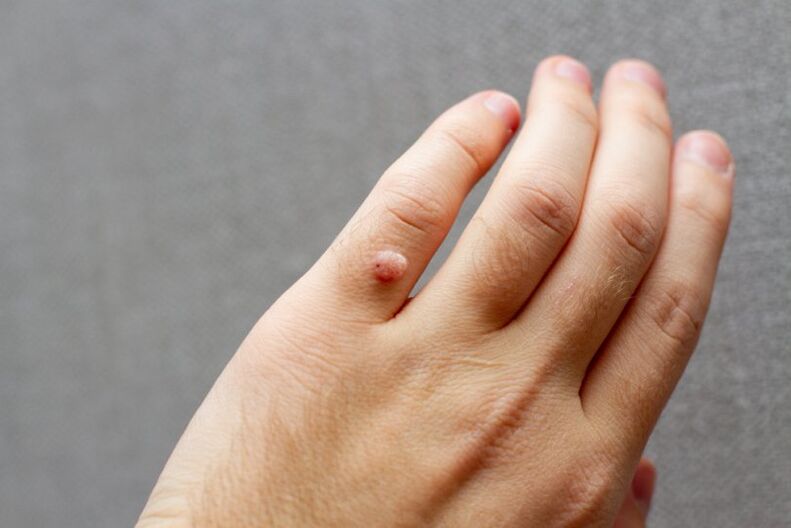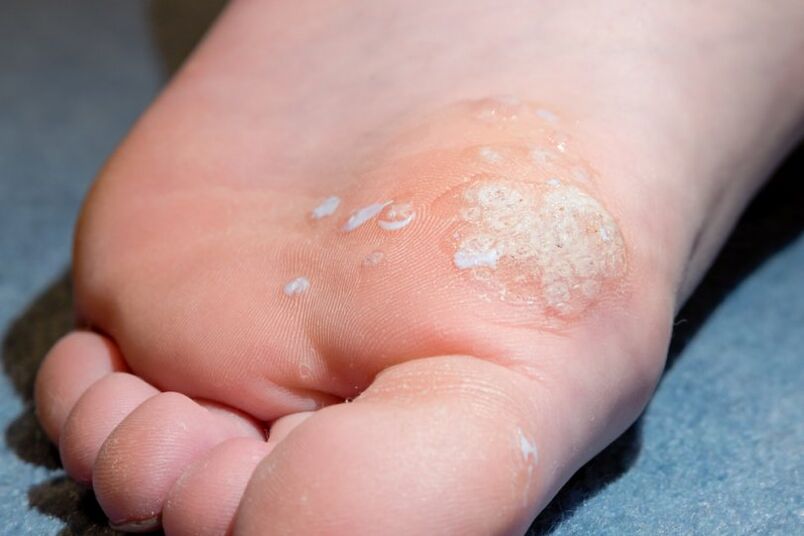A wart is a benign formation on the skin that looks like a rounded elevation, which is caused by a strong growth of the surface epithelium and papillary layer.
In most cases, cell proliferation is caused by HPV, which is provoked by external and internal factors - anxiety, decreased immunity, in some cases - increased sweating of the extremities. You can become infected with HPV through contact with the carrier and objects. This does not apply to senile warts - their formation is not of a viral nature.



The size of formations varies on average from 1 to 15 mm (senile reaches 6 cm). They have a rough surface, so they are easily contaminated, so they can change color from almost pulp to brown over time. Multiple units can group together when they are close. All warts can be removed. In some cases, the doctor may decide to observe without removal if the patient feels comfortable.
When to see a doctor urgently:
- education is located in the genital area;
- itching, secretions are observed in the area of the neoplasm;
- have uneven color, spots;
- it changes shape and color;
- is injured in everyday life due to location;
- you are not sure if it is a wart.
Types of warts
There are 4 types:
- ordinary (simple) - formed on the hands (subgroup inside - plantar);
- flat - occurs mainly in young people, so the second name of flat warts is youthful;
- spike - formed in the genital area, infection with types of HPV that cause it;
- senile - causes are unclear, not caused by HPV, develops in middle-aged and older people.
Normal warts are 1-10 mm in size, dense, keratinized. The average life of such a formation is about 2 years, after which it disappears spontaneously. The most common place of localization is brushes.
Plantar warts are formations on the feet that at first look like a small callus, then a rough surface with black dots appears in the center, and a small roll along the edge. Corneal formations cause inconvenience, due to which the patient experiences pain when walking. They can cause loss of mobility and performance. Eliminating plantar warts significantly improves the quality of life.
Flat warts have obvious borders, small size - up to 5 mm, slightly rise above the surface of the skin by 1-2 mm. Any shape - round or uneven. Skin irritation, scratches, cuts can cause the appearance. The favorite places for the localization of this type of formations are the face, hands and lower legs.
Genital warts are located on the genitals. They are processed by removal, and quite quickly, because they can get large sizes. Infection occurs sexually, its probability is greater if there are wounds in the groin. Condylomas are pink nodules that coalesce and form papillary growths attached to the body on a stalk.
Senile warts (seborrheic keratosis) are the only ones not associated with HPV. We can talk about a genetic predisposition due to frequent positive family anamnesis. Formations can reach quite large sizes - up to 4-6 cm (average size - 0. 2-3 cm). They spawn in groups of up to 20 units. The most common places of localization are the chest, face, neck, forearms, hands.
At first, the elements are flat and small, the surface is uneven. They are covered with a crust that is easy to remove. Then the crust becomes denser, drier, covered with cracks. Over time, their thickness can be 1-2 cm. With age, they acquire the shape of a mushroom cap, become dark, although initially they were light yellow or pink. They contain impurities. Formations never turn into a cancerous form.
Removal of warts
The doctor chooses the treatment of warts individually, depending on their type, size, contraindications and other aspects. The clinic offers 4 ways to remove warts, papillomas and condylomas:
- using a radio wave scalpel;
- CO2 removal by laser;
- cryodestruction;
- diathermocoagulation.
They are suitable for removing flat and raised warts. Unfortunately, none of the proposed methods can eliminate HPV from the body, which leaves a 30% chance of recurrence. Also, no method gives a 100% guarantee, an additional procedure may be required. Scars may remain after removal, the correct choice of clinic and technique will help to avoid this. Experienced dermatologists in a professional clinic and high-quality equipment manufactured according to modern standards are a combination that ensures quality service, painlessness and quick recovery. Infiltration and application anesthesia is available.
laser removal
The laser produces a powerful light stream of energy, causing a rapid increase in temperature in the tissue. The advantages of laser removal of papillomas and warts are the absence of bleeding, blisters, and large scars. The procedure lasts 5-7 minutes. As a rule, formations are eliminated the first time.
Wart removal is carried out according to the following plan:
- treatment of the skin with an antiseptic;
- treatment with an anesthetic (injection or lubrication);
- treatment of papilloma over the entire surface;
- treatment and dressing of the resulting wound.
Cryodestruction
Processing is carried out with liquid nitrogen. This procedure is used in the removal of various neoplasms and even in the treatment of internal organ tumors, cervical diseases, and liver surgery. Under the influence of low temperature, the water in the cells freezes, the cell bursts and dies.
Withdrawal procedure:
- anesthesia (if it is large, it is located in an area with thin skin);
- exposure to a cotton swab soaked in liquid nitrogen (5-30 seconds depending on the size);
- waiting for 2 minutes. Inspection. If necessary, repeat the procedure.
The next day, a bubble will appear on the skin, which will gradually disappear. The patient's task is not to damage the bubble ahead of time, to wash it carefully, not to apply a patch, to protect it from external influences.
Diathermocoagulation
This treatment method includes tissue cauterization using high-frequency current, contact and non-contact methods. The procedure is performed with the help of EKhVCh (high-frequency electrosurgical apparatus). Its difference from the radio wave scalpel "Surgitron" lies in the use of high-frequency current - approximately 400 kHz (radio knife up to 4 MHz). The method allows you to coagulate the skin without blood and effectively deal with formations.
radio wave scalpel
As a radio wave scalpel, when removing warts, Surgitron is used, which operates in radio waves with a frequency of 3. 8-4. 0 MHz. The wave vaporizes the cells it targets and does not affect adjacent ones. Often this method is used for the face, neck, genitals because of its delicacy. Advantages also include high speed, bloodlessness, minimal swelling, quick healing.
The operation is performed as follows:
- the skin is treated with an antiseptic;
- anesthesia is administered (injections, cream);
- the doctor takes a waveguide of the required shape and removes the neoplasm;
- antiseptic treatment.
Make an appointment with a dermatologist
The network of NEARMEDIC clinics offers several effective methods for the elimination of flat, pointed, senile, ordinary, including plantar warts. An inexperienced person can confuse warts with other neoplasms that can turn into a malignant form - before starting treatment, you should consult a dermatologist.
In our clinic, treatment is provided by experienced dermatovenerologists, candidates of medical sciences and doctors, who can be consulted even in difficult cases. On the website you will find the names, photos and biographies of all specialists with their place of reception. You can make an appointment with a specific doctor here.
To reduce the likelihood of relapses, it is not enough to eliminate the visible manifestations of the problem. For this purpose, general therapy with antiviral drugs is used, which reduces the activity of the human papillomavirus. The doctor will carry out a full diagnosis, develop a treatment plan, advise on all methods of removal and recommend the most effective one in a given case. At the first signs of illness, contact a specialist.
The costs of a doctor's visit and withdrawal are indicated in the table. Please note that removal of 2 to 5 or more than 5 formations is cheaper. To make an appointment, please call or use the form on the website.
















































































